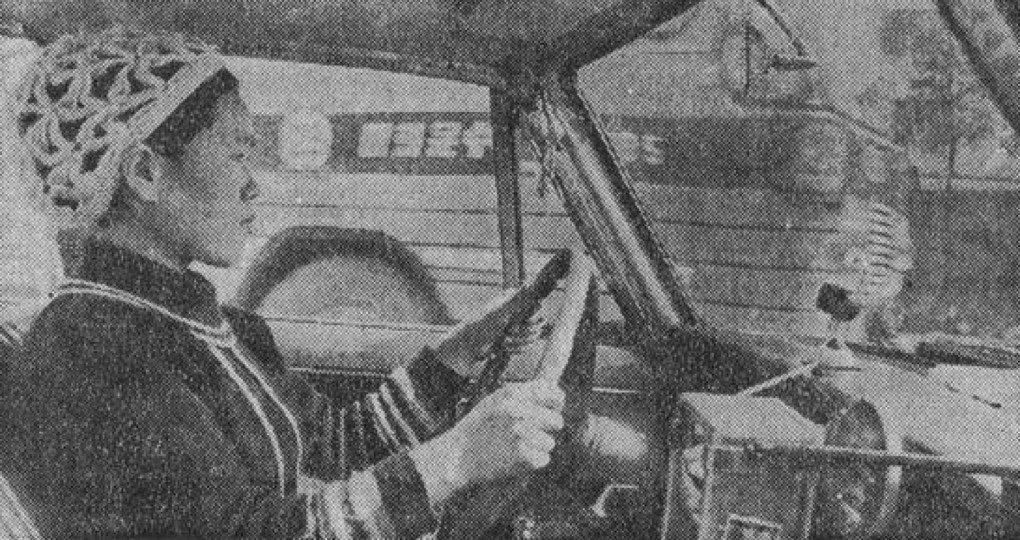Teaching Korean Art History at the Harvard Art Museums
Written by Maya Stiller, Fellow, Korea Institute, Harvard University;
ACLS/The Robert H.N. Ho Family Foundation Postdoctoral Fellow in Buddhist Studies, Department of History of Art and Architecture, Harvard University; Assistant Professor, University of Kansas
Remember the time when students went to the library to check out physical books? While monographs and museum exhibition catalogues still hold great value in the field of Art History, faculty and students increasingly use online resources for their work. Most convenient for the study of Korean art is the recently updated National Museum of Korea database, which facilitates accessibility to information including high-resolution photographs of artworks and archaeological artifacts from most South Korean museum collections. However, it is still essential to see artworks in real-life to gain visual and cultural literacy. Proper art-historical training necessitates the study of original works of art because photographs published online and in printed form cannot fully transmit the materiality of an artwork and its true color scheme.
The Harvard Art Museums offer faculty, students and visiting researchers the exceptional opportunity to study Korean artworks since the Museums hold one of the best collections of Korean art in the United States. The Museums’ Korean holdings range from Three Kingdoms pottery to Koryŏ Buddhist painting and Chosŏn period landscape painting. From the early 1990s through his retirement in 2013, Robert D. Mowry, Alan J. Dworsky Curator of Chinese Art Emeritus at the Harvard Art Museums, conscientiously expanded the collection by acquiring not only the Gregory and Maria C. Henderson collection of Korean ceramics, which in addition to early pottery includes Koryŏ celadon and Chosŏn white ceramics, but also by purchasing important Chosŏn period landscape paintings and Buddhist paintings. As Soon Young Kim Postdoctoral Fellow (2015-16) at the Korea Institute and as ACLS/The Robert H.N. Ho Family Foundation Postdoctoral Fellow in Buddhist Studies (2016-18) at Harvard’s Department of History of Art and Architecture, I had the honor to guest-lecture and teach classes using the Museums’ excellent Korean holdings.
For my guest lectures in classes taught by professors Sun Joo Kim and Si Nae Park, I chose a hands-on approach to teaching. Instead of lecturing on Korean art, I prepared a small selection of artworks and supported students in exploring the artworks on their own. At the beginning of each guest lecture session, which took place at the wonderful facilities of the Museums’ Art Study Center, I introduced the “Art Historian’s Toolbox,” in which students familiarized themselves with essential “tools” such as art historical methodology and object-specific terminology. In groups of two to three people, students then spent the remaining time of the session exploring one artwork from the Museums’ Korean collection, for example Kim Hong-do’s (1745-1806) landscape painting “Alms-bowl pond,” which depicts a scenery in the famous Diamond Mountains, or a monochrome Korean tea bowl likely produced for export to Japan in the seventeenth century. I was impressed by the students’ keen perception and ability to readily apply the tools to the actual artwork. During our final discussions of the artworks, even students who had never taken an art history class before were able to describe the pieces adequately and made sophisticated guesses about their original function and the artist’s socio-cultural background. Lectures are certainly necessary to provide students with an in-depth understanding of the subject, but I think the toolbox approach is a convenient first step that helps new students of art history familiarize themselves with art-historical methodology. Hopefully, the students attending my guest lectures will remember some of these tools when they encounter an artwork in the future.
Teaching highlights during my time at Harvard include moments when my students and I stood in front of Buddhist artworks such as the fourteenth-century painting of a Water-Moon-Kwanŭm or the eighteenth-century painting of Chijang and his attendants and discussed the paintings’ composition and color scheme. Such moments reminded me of the importance of using original works of art when teaching art history. Furthermore, the Museums’ Art Study Center affords one the rare opportunity to examine artworks under daylight, which is the ideal condition to examine colors most accurately. Most museums around the world only allow visitors to see artworks under the artificial light of exhibition galleries and storage facilities.
It was also a tremendous privilege to curate small Korean art exhibitions, which provided students with study objects over the course of the semester and enhanced the presence of Korean art in the Harvard Art Museums teaching galleries. With the assistance of museum curators Melissa Moy and Laura Muir as well as Henderson post-doctoral fellow Seung Yeon Sang, I curated an exhibition of Korean ceramics for my class “Ceramic Arts of Korea – Placenta Jars, Pottery Wars and Tea Culture” (taught in spring 2016) and an exhibition with Buddhist sketches and paintings for my class “Buddhist Art of Korea: Faith, Power and Paradise” (taught in spring 2017).
In addition to broadening my knowledge of Korean art, history and culture through the invaluable collections of the Harvard-Yenching Library, coupled with Mikyung Kang’s heroic efforts to locate rare and difficult to find books, my experience of teaching, guest-lecturing, and curating at the Harvard Art Museums also helped me become a more effective teacher and researcher. And finally, it is with my utmost gratitude that I thank KI director Sun Joo Kim, executive director Susan Laurence and Yukio Lippit for their kindness and generous support, which made this rewarding experience possible.
P.C.: Students in Professor Sun Joo Kim’s Korean History 115 class examining Kim Hong-do’s (1745-1806) “Alms-bowl Pond” and Cho Hŭi-ryong’s (1797-1859) “Old Weathered Plum Tree with Spring Blossoms” during Dr. Maya Stiller’s guest lecture, Art Study Center at the Harvard Art Museums, Fall 2016. Photo © Hyeok Hweon Kang.